Breeding barbs at home
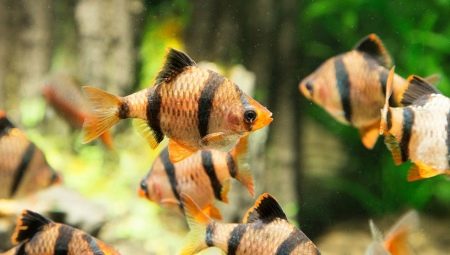
Aquarists note that even beginners do not have problems with the reproduction of barbs. The main thing is to follow certain rules, thanks to which it will be possible to withdraw the maximum number of fry.
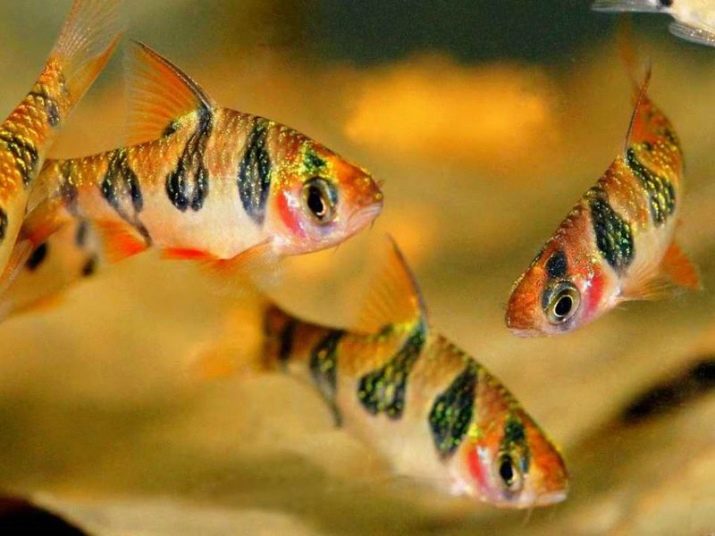
Popular types
For breeding in aquariums, there are several species of barb fish, which are especially in demand. Sumatran or brindle individuals are distinguished by the presence of 4 black stripes on the luminous body, located vertically. There are orange markings on the caudal fin. Average size is 5 to 7 centimeters. The five-strip barb visually resembles the previous view, however, it is slightly smaller and has less contrasting colors.
Fire fish, like Denisoni, grow up to 15 centimeters. They come in vibrant reds and golds. Denisoni is distinguished by a silvery shade and contrasting black and red lines. In black-striped ruby, the main color is bright red, and the size is up to 6.5 centimeters.
The largest is considered foil barb. Its length can be up to 35 centimeters, and the difference is in black and white stripes. The rarest is called four-line. The stripes are arranged horizontally, which is a peculiar feature.
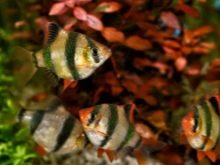
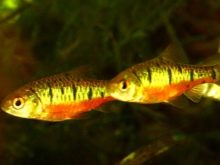
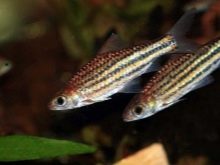
Differences between male and female
In this case, there are no particular difficulties for aquarists. Like other fish, females are larger in size, while males have more saturated colors. Barbus girls are distinguished by smooth outlines of a calf and a rounded abdomen, while boys are quite flat.
You should also pay attention to the anal fin.Its location is different depending on the gender. In girls, it expands significantly downward and is at an angle of almost 90 degrees to the tail.
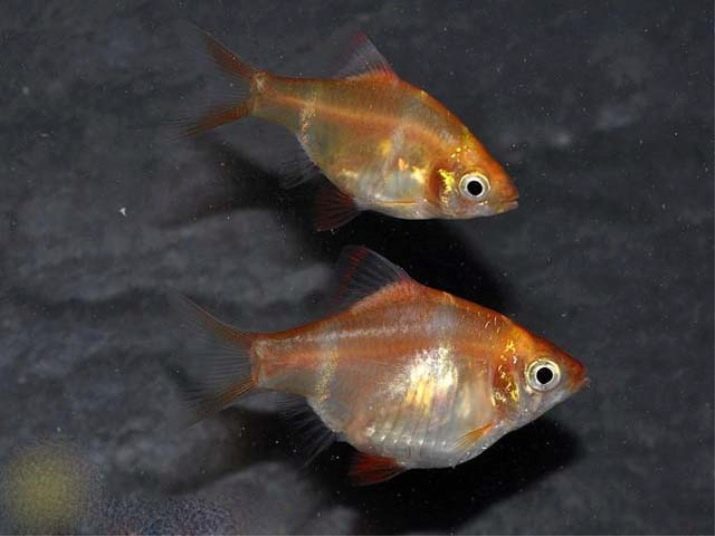
Puberty
Sexual maturity occurs when the fish are 7 months old. Aquarists need to take into account that spawning is mandatory for females. If it does not happen, they may simply die.
In addition, it is necessary to provide a habitat for a fish pair preparing for crossing. This should be a separate container of a large enough size, where the fish will not be cramped.
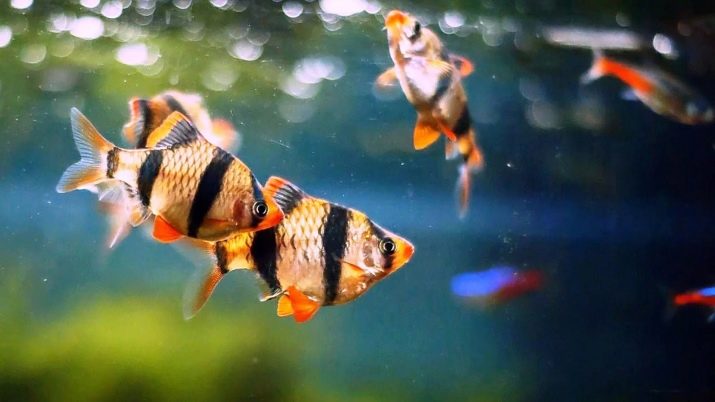
Preparation
It is necessary to provide conditions for spawning as follows: the fish are divided into pairs and placed in different containers. This will allow the caviar to mature in a calm and comfortable environment.
It is necessary to exclude the possibility of overexposure, as it can lead to irreversible consequences.... Girls develop a cyst that does not allow active movement, and boys begin to show aggression.
If you plan to breed barbs at home, you will need to provide them a spacious aquarium, the optimal volume of which is 100 liters. In such a container, 6 fish will feel comfortable, of which 4 should be female.
As soon as the aquarist notices a couple's interest in each other, he should begin preparing for spawning. If several males are interested in one female, preference should be given to the most active and most strikingly colored. To check if the fish are ready for spawning, you need to carefully pick them up and lightly press on the abdomen. The girl should allocate a small amount of caviar, while the boy should allocate droplets of milk.
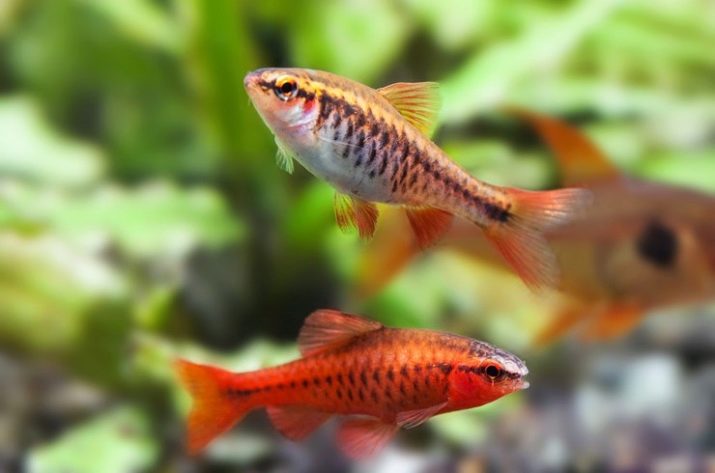
How do they breed in the spawning grounds?
So, when the fish are ready to spawn, it is necessary to prepare all the conditions for breeding for them. You will need an aquarium with a capacity of 10 to 20 liters. During this process, a significant release of sex hormones will occur, which will significantly reduce the quality of the water. That's why the larger the spawning grounds, the cleaner the water and the more chances of getting eggs that are not infected with fungal diseases.
The glass container must be disinfected before filling. The liquid level should be about 25 centimeters. A special mesh with small cells should be placed at the bottom, which will protect the eggs, and the fish will not be able to use it as food. Small ceramic stones are also suitable - they can act as a net and cover the eggs.
It is also necessary to take care of the condition of the water. It directly affects the course of spawning. The settled tap water and distilled water must be mixed in proportions of 2: 1. You should also take care of the acidity - it must be at 6 pH. To disinfect the liquid, you can drop a decoction of oak bark there, or add a little orthophosphoric acid. This will help keep the fry free from infections.
The temperature in the spawning grounds should be around 25 degrees. 3 days before planting the fish, it is necessary to begin to saturate the liquid with air by means of blowing. It ends after the pair is placed in the aquarium.

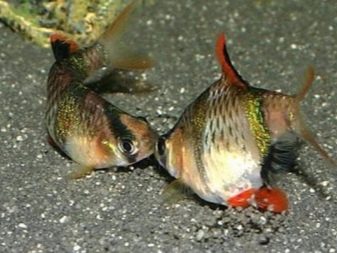
We must not forget that a spawning ground is a habitat for a pair of fish. There must also be an intermediate point. First, you need to prepare a container in which water is mixed from both the main aquarium and the spawning tank. The barbs are placed there for 30 minutes, after which they are sent directly to the spawning grounds.
Experts recommend carrying out manipulations in the evening. The light goes out 3 hours after the transplant. By the morning spawning begins, so you need to provide diffused lighting. Up to 600 eggs can be obtained from one female.
Mating games can be easily noticed, as during their course the fish will rub their abdomens. If this behavior is not observed within 3 days, you should try to replace the male. With successful spawning, the pair must be planted - this will ensure the safety of the eggs. The female should be helped to remove all the eggs entirely.This is done by stroking the tummy and applying light pressure.
It is impossible to plant fish immediately in a common aquarium. You will need to use the intermediate container again. Initially, the temperature of the water in it should be equal to the temperature in the spawning box. Within 3 days, it gradually decreases to equal the aquarium, after which the fish return to their usual habitat.
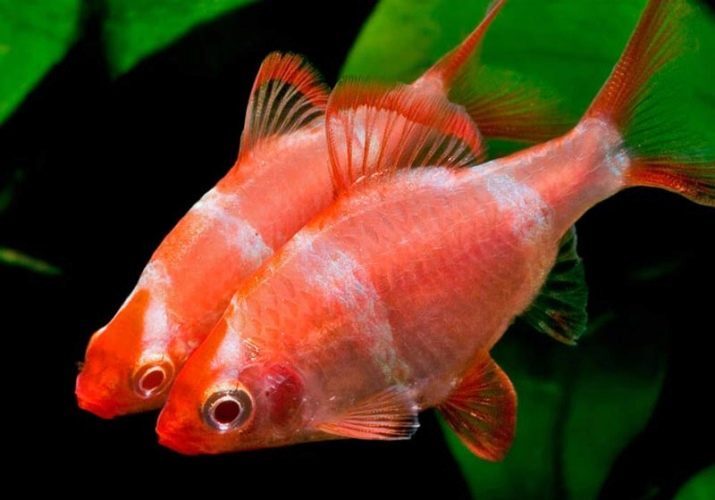
How to breed in a shared aquarium?
If a decision was made to breed barbs in a common aquarium, you need to take care of the availability of shelters for the fry. If they are not there, adult relatives will eat caviar. Such a process is more natural, respectively, the number of offspring will be much less.
In this case, no special training is required. but at the end of the process, it is also worth helping the female to remove the remaining eggs. This will save her from developing a cyst. When fry appear, they are fed with live dust.

Further actions
When the spawn is finished and the fish have been removed from the spawning ground, the water must be removed. Its level should be about 10 centimeters. After half a day, it is necessary to remove the mesh and remove it, having previously freed it from the eggs. Methylene blue is added to eliminate fungal contamination. It will also help you distinguish between unfertilized eggs, which will turn white.
The larvae hatch the next day. At first, they feed from yolk sacs. After 12 hours, half of the liquid is replaced with boiled water and the blowdown is increased. The fry appear after another 3 days. So that the fish acquire a characteristic color, and the caviar does not mutate, you need to provide a small partial shade.
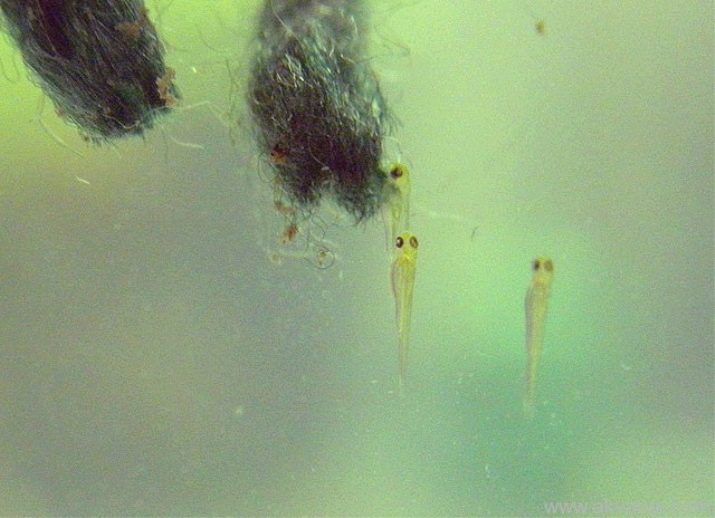
Fry care
Ciliates or live dust should serve as feed. Artemia, nematodes and nauplii are also suitable. You can replace them with regular hard-boiled yolk. Feeding for 3 days occurs 5 times a day, then the fry are transplanted into a larger aquarium.
1000 fry will suffice with 30 liters of water. It is necessary to provide filtration and maintain the temperature at the correct level. After 2 weeks, the color and appearance of the fish are fully formed, they must again be seated at the rate of 10 individuals per 1 liter of water. First of all, fish of more impressive sizes are deposited.
Sorting the fry is very important. In its absence, larger and stronger individuals will eat the weak. In the general aquarium, fish are placed when they are 1 month old. By this time, their size reaches 1 centimeter.
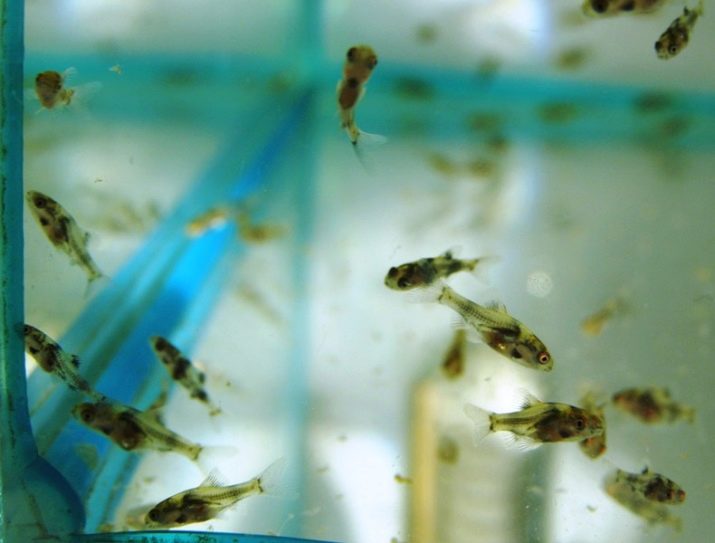
Re-spawning
To exclude the appearance of a cyst, the female should be re-prepared for it 2 weeks after spawning. However, in this case, the male must be replaced. Without repeated spawning, the female will no longer be able to reproduce.
4 times a year, producers are placed in a separate aquarium for 1-2 weeks. To make the process more active, it is worth maintaining an elevated temperature there.
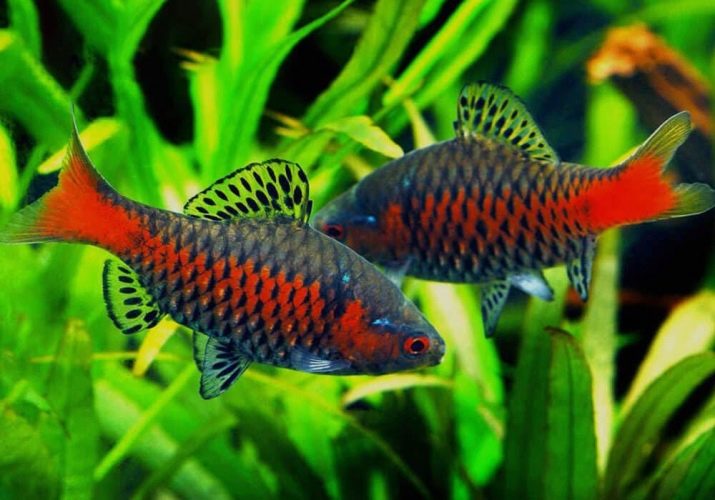
This video explains in detail how to breed a Sumatran barbus.








